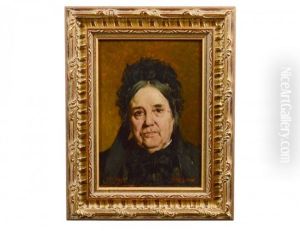Victor Leydet Paintings
Victor Leydet was a French artist born in 1861 in Aix-en-Provence, France. Not as widely recognized as some of his contemporaries, Leydet was nonetheless a part of the vibrant artistic scene of late 19th century France. He worked primarily as a painter and was known for his landscapes and still lifes, which were influenced by the Impressionist movement, though he maintained his unique stylistic approach.
Leydet's artistic journey was typical of many artists of his time, in that he studied at local art schools before moving to Paris, the epicenter of the art world during that period. In Paris, he would have been exposed to the works of the Impressionists, who were revolutionizing the art scene with their loose brushwork, attention to the effects of light, and ordinary subject matter. While he was influenced by these developments, Leydet also drew inspiration from his Provençal roots, often depicting the countryside and scenes from the South of France.
Unfortunately, Victor Leydet's career was cut short. He died prematurely in 1904 at the age of 43. Because of his early death and the overshadowing fame of other Impressionists, Leydet did not gain the same level of recognition as some of his peers. As a result, detailed biographical information about Leydet is scarce, and his body of work is not as well documented. Despite this, his paintings do emerge in art auctions and collections, appreciated by those who recognize his contributions to the post-Impressionist landscape in France.
After his death, Victor Leydet's works have occasionally surfaced in exhibitions and retrospectives focused on Provençal artists or the broader Impressionist movement. His legacy, while modest in comparison to giants like Monet or Cézanne, is that of an artist who captured the beauty of the French countryside with a sensitivity and an eye for the interplay of natural light and color that characterizes the Impressionist period.

